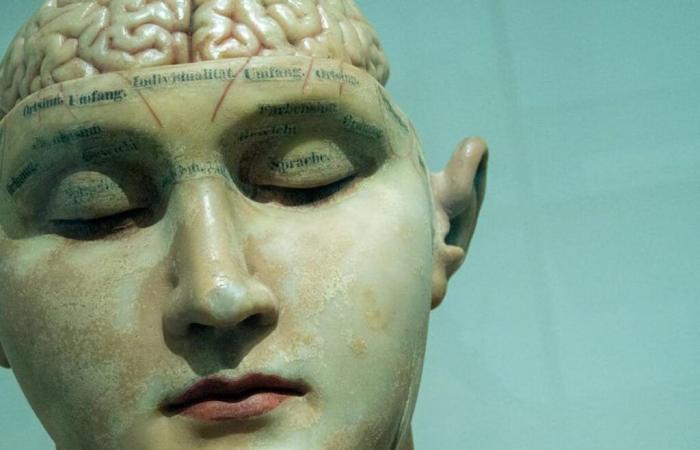Formulated by Hippocrates, the “father” of medicine, the humoral theory postulated that the different humors of the body – in other words the fluids it contains – determine our temperament, our state of mind. Depending on the predominance of one or the other, the character of an individual was supposed to be rather “sanguine” (in the jovial, enthusiastic sense), “lymphatic” (phlegmatic, calm), “bilious” (i.e. choleric, linked to the bile produced by the liver) or melancholic (linked to the supposed black bile of the spleen). Bodily factors, and in particular blood factors, therefore had an influence on the individual’s psychological state.
In force until the 18th century, the humoral theory ended up giving way under the battering rams of experimental sciences. Today, these sciences attribute to the brain a central role in the genesis of the mind, emotions and our self. However, recent discoveries are re-examining the power of one of Hippocrates’ humors on our brain, our mind and our behavior: blood. Explanations.
The brain, a separate organ?
Today, the theory of humors has not completely disappeared from our daily lives. Many expressions are directly derived from it: “to be in a good or bad mood”, to have “mood swings”, to “make bile”, to have the “spleen” (a word designating both a state of melancholy and the organ of the “spleen” in English, which according to Hippocrates secreted the black bile responsible for melancholy)…
However, once it has left the linguistic domain, the theory of moods is well and truly dead and buried: today, it is no longer considered to explain our states of mind or our personality.
The dominant view, shared by many neurobiologists, is that only our brain defines what we are. It is the way our neurons function and connect to each other, forming networks responsible for our cognitive or motor abilities, that characterizes us as an individual.
As such, this organ is often considered to be separate, not very “listening” to the rest of the body. In particular, it is isolated from pathogens and toxins that could threaten it by the blood-brain barrier, a sort of highly selective filter that controls exchanges between the blood and the central nervous system (brain and spinal cord). But the reality could be significantly different, as suggested by some more or less recent research results.
A brain not so isolated
Due to the low permeability of the cerebral vascular wall, the nerve structures are only slightly accessible to most blood compounds. However, some points of contact do exist. Thus, at the edge of the cerebral ventricles (the internal cavities of the brain), at the level of the choroid plexuses, the blood is filtered and converted into another fluid, the cerebrospinal fluid.
Circulating at the level of these ventricles, as well as in the central canal of the spinal cord, and bathing the meninges, the cerebrospinal fluid can easily diffuse towards the surrounding nervous tissue and interact with it. It is therefore largely through it that the blood impacts the brain.
Furthermore, a population of sensory neurons (which we are studying in the laboratory) directly contacts the cerebrospinal fluid: they detect its contents and become activated when it changes, for example during an infection of the nervous system.
Very old studies have shown that a brain state can be transferred from one animal to another via the cerebrospinal fluid. For example, transfusing this fluid, taken from a sleep-deprived animal, to a wide-awake mouse immediately puts it into the arms of Morpheus.
Other work has also shown that transfusing cerebrospinal fluid from one fasting animal to another can increase hunger and food intake in the latter. Furthermore, more recently, it has been shown that transfusing cerebrospinal fluid from a young mouse to an old mouse improves its memory. This is also the case for blood transfusion.
This last finding is not so surprising, because beyond the cerebrospinal fluid, the blood itself has effects on brain function.
In 2011, a “principle” study (in other words “pioneering”, in the sense that it is the first study of this type) from Stanford University showed that the transfusion of blood or plasma (the fraction of blood stripped of its cells – red blood cells and white blood cells) from a young mouse to an old mouse (whose brain parameters are declining), makes it possible to “rejuvenate” the brain of the latter and thus improve its learning abilities.
Similarly, more recently, transfusing blood from “runner” mice into sedentary mice stimulates the brains of the latter, just as physical activity would. How is blood able to modulate brain function?
Neuroactive constituents
Several elements present in the blood can act on the brain. Among them are certain constituents involved in inflammation and immunity. Researchers at the University of Virginia (United States) have shown that antiviral substances (interferons) produced by certain immune cells (T lymphocytes) are capable of acting on neuronal networks and promoting certain behaviors. Mice deficient in T lymphocytes have degraded learning abilities, and are much less sociable.
Furthermore, we know that inflammatory blood substances, which during illness cause fever and lack of energy, can alter brain plasticity and our cognitive abilities, as has been observed in many cases of infection by the SARS-CoV-2 coronavirus, responsible for the Covid-19 pandemic.
However, with age, these inflammatory substances accumulate in the blood depending on our state of health and lifestyle; they thus contribute to the alteration of cognitive functions and promote neurodegenerative pathologies. These inflammatory substances, by diffusing through the vessels, also intervene in the depressive state by exerting an inhibitory action on the nerve centers controlling motivation.
But where do they come from? A nod to the humoral theory, they are secreted by our main immune organ… the spleen!
Other neuroactive substances of the hormonal type are secreted into the blood, not only by the hormonal glands, but also by most other organs (viscera, muscles, bones, etc.). These endocrine compounds (substances secreted and then transported into the blood, which act on a tissue other than their tissue of origin) also modulate our nervous networks.
For example, physical activity triggers the release of various substances (myokines and hepatokines) from the muscles and liver, which have a neurostimulant, neuroplastic and even antidepressant action.
Other more classic hormones, such as estrogen, can also exert a neuro-doping action on the brain and promote learning. Some hormones also control our behavior, as has been shown for parental behavior.
If a pregnant mouse, whose brain is flooded with hormones produced by the placenta (estrogen/progesterone), is placed in the cage of a newborn, the mother-to-be will take charge of it and mother it. This does not happen if the action of estrogen has been previously prevented (or if the mouse is a virgin). Fathers are not left out: according to a study on sand mice (Peromyscus maniculatus): a progestin hormone produced by the adrenal glands transforms males into real “hen dads”!
Although these results cannot be directly extrapolated to humans, since this latter hormone is not a priori produced by the adrenal glands of humans, it is interesting to note that a progestin hormone similar to that of sand mice (allo-pregnanolone) is already used in women to treat postpartum depression.
It therefore seems that the brain alone does not determine brain function and mental state. Not being completely isolated from the rest of the body, it is influenced by multiple components, particularly the blood. An observation that, perhaps, would have consoled Hippocrates a little…






